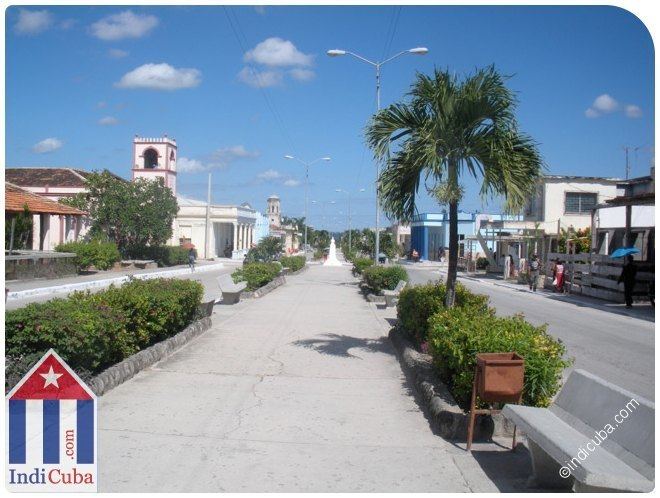Time zone EST (UTC-5) Area 1,178 km² Local time Wednesday 5:57 PM | Established 1541 (1861 as a city) Area code(s) +53-31 Elevation 25 m | |
 | ||
Weather 27°C, Wind NE at 24 km/h, 58% Humidity | ||
Puerto padre cuba playa
Puerto Padre ([ˈpweɾto paðɾe]) is a municipality and town in the Las Tunas Province of Cuba. It is located on the northern coastal region of the province, in an estuary (Estero El Espanolito) that opens into the Puerto Padre Bay.
Contents
- Puerto padre cuba playa
- Map of Puerto Padre Cuba
- Puerto padre kids jumping off the ferry
- History
- Columbus arrival point theory
- Overview
- Climate
- Tourism
- Monuments and buildings of interest
- Demographics
- Personalities
- References
Map of Puerto Padre, Cuba
Puerto padre kids jumping off the ferry
History
Known popularly as the City of Mills, Puerto Padre has a history dating back into the 16th century. In the mid-19th century (1851), the city began its transformation from a small town into an industrial centre with the construction of its first sugarcane mill. The town played a large role in Cuba's wars of independence, and today is something of a tourist centre.The founders were Criollo(Creole) landowners of Castilian ancestry and Catalan merchants.
Columbus' arrival point theory
During the 2nd half of the 20th century a group of archaeologists brought forward a theory which disputes the current version of Columbus' landfall site. They claim that Puerto Padre's bay was indeed the first spot in which Columbus landed in Cuba. The commonly accepted site is in the Bariay's bay which is located further east in the province of Holguin. There are several sites which are disputed of being the first landing spot of Columbus and his crew: Puerto Padre and Manati,both in the province of Las Tunas; and Gibara and Bariay in the province of Holguin).
Overview
The city is located at the bottom corner of the bay which bears the same name. At least two rivers lead into Puerto Padre's Bay. The small islet of Cayo Juan Claro is located towards the eastern center side of the bay, the Puerto Carupano port is located in this islet which is connected to the mainland by a man-made road, a railroad connects the islet with the now defunct sugar factory in the nearby town of Delicias. The terrain is mainly formed of flat-land although the city itself seats on a small hill which rolls nicely into the sea. The immediate terrain nearby the town is swampy with a thick mangrove forest. Prior to the 1959 revolution,the municipality was divided into the barrios of Chaparra, Delicias, Estrada Palma, La Lima, La Yaya, Los Alfonsos, Maniabón, Norte, San Manuel, Santa María, Sur, Vedado and Yarey.These toponyms are still in use today though the pre-1959 municipality's borders no longer include Delicias (Antonio Guiteras) or Chaparra (Jesús Menéndez), named for their respective sugar mills, which as of 2012 are no longer operational.
Climate
This area typically has a pronounced dry season. According to the Köppen Climate Classification system, Puerto Padre has a tropical savanna climate, abbreviated "Aw" on climate maps.
Tourism
The town is known for its charming streets, bay views and hilltop fortress. Crystal clear water and white sandy beaches can be found at the entrance to the Puerto Padre Bay. These beaches are popular with locals and visitors alike, their names are: El Rail, La Boca and La Llanita. Tourist facilities are available at nearby beach resort located in Covarrubias beach, which is within the municipality of Puerto Padre.
Monuments and buildings of interest
Demographics
In 2004, the municipality of Puerto Padre had a population of 93,705. With a total area of 1,178 km2 (455 sq mi), it has a population density of 79.5/km2 (206/sq mi).
